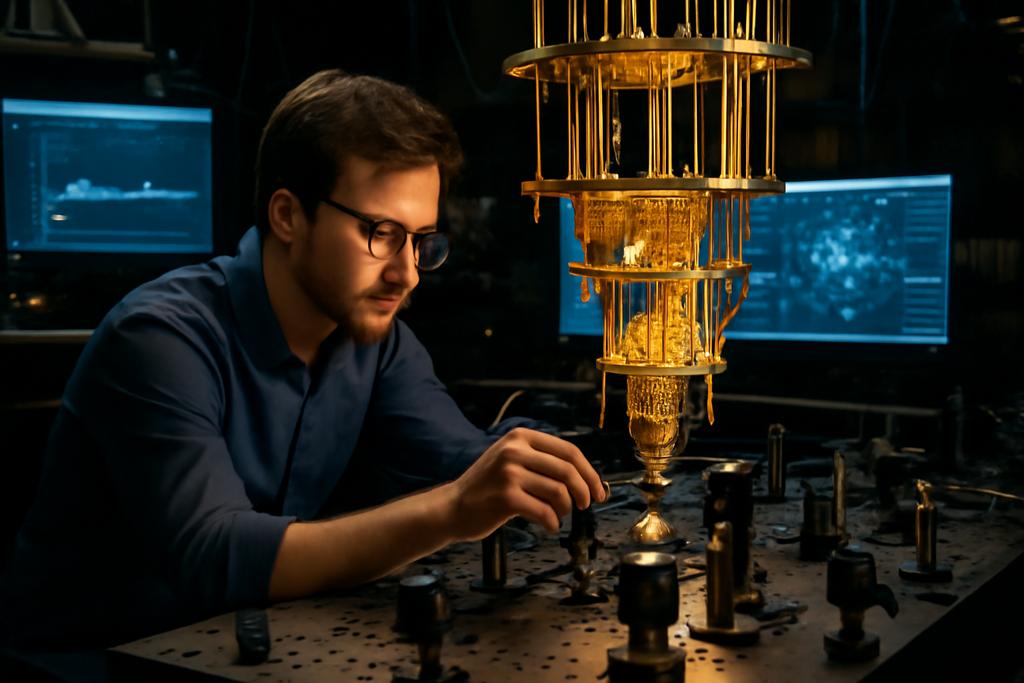Unlocking the Power of Entangled Quantum Sensors
Imagine a network of tiny sensors, each a quantum bit of information, collaborating to detect the faintest whispers of a physical phenomenon. This isn’t science fiction; researchers at the University of Pittsburgh are exploring how to dramatically enhance the sensitivity of these quantum sensor networks by harnessing the power of entanglement.
Lead by researchers Priyam Srivastava, Vivek Kumar, Gurudev Dutt, and Kaushik P. Seshadreesan, the study delves into the realm of variational quantum sensing, a relatively new approach to optimizing the performance of quantum sensors. In essence, it’s a clever blend of quantum mechanics and classical optimization techniques, allowing scientists to tailor-make the entangled states of these sensor networks to maximize their sensitivity. This is much like tuning a musical instrument – we tweak the physical parameters to achieve a specific, desirable response.
Beyond the Standard Quantum Limit
Standard quantum sensors, even those operating at the quantum level, face limitations in their ability to accurately measure physical quantities. Their performance is limited by what’s known as the ‘standard quantum limit.’ However, this limit can be broken by exploiting a profound phenomenon in quantum mechanics: entanglement. When two or more quantum particles become entangled, their fates become intertwined, allowing them to exhibit correlated behavior far exceeding what’s possible with independent particles.
The researchers’ study focuses on how to cleverly leverage this entanglement to outperform the standard quantum limit for specific types of measurement tasks. They model scenarios where multiple qubits – the basic units of quantum information – each accumulate a phase that’s directly related to the strength of a physical signal being measured. The challenge is that each qubit might register the signal with a different sensitivity, leading to an uneven “weight” of information. Think of it like a team of detectives investigating a crime, where some have more relevant clues than others.
Tailoring Entanglement for Optimal Sensing
The innovation lies in how the scientists optimize the entanglement among the qubits. They don’t just throw entanglement at the problem; they carefully sculpt it. They use a technique called ‘variational quantum algorithms’ to design quantum circuits that prepare the qubits in precisely the right entangled state to maximize the sensitivity of the entire network to the signal being measured, irrespective of the uneven weighting of the individual qubits’ contribution.
This is akin to designing a highly specialized detection system that automatically adjusts to the specific structure of the signal being sensed. The researchers benchmark this approach against two scenarios: one where all qubits contribute equally, and another where a central qubit carries significantly more weight. In both cases, the results are striking: the tailored entangled states allow the network to reach precision limits well beyond what’s achievable with classical approaches, or even with less cleverly entangled quantum systems. This demonstrates the power of not just using entanglement, but actively designing the entanglement pattern.
From Theory to Practical Applications
The work extends far beyond theoretical considerations. The researchers’ findings have direct implications for numerous practical applications where highly sensitive measurements are crucial. This includes:
- Distributed field sensing: Monitoring environmental factors like magnetic fields or gravitational forces across large areas.
- Clock network synchronization: Achieving exceptionally precise synchronization of clocks across vast distances.
- Biomedical imaging: Developing advanced imaging techniques with unparalleled resolution.
The versatility of this variational approach is remarkable. Unlike more rigid methods of quantum sensing which require designing a new circuit for each measurement type, this approach adapts to different measurement types through adjustments to the weighting scheme in the variational parameters.
The Future of Quantum Sensing
The study paves the way for a new generation of ultra-sensitive quantum sensors. The ability to tailor entanglement to specific tasks is a significant breakthrough. Future work will focus on improving the robustness of these sensors against noise and imperfections, which are inevitable in real-world implementations. Nevertheless, the potential for groundbreaking advancements in a wide range of fields is immense.
The development of more robust and scalable quantum sensor networks is a key objective, pushing forward the boundaries of quantum technology and opening doors to applications that were previously considered unattainable. The researchers’ work provides a roadmap for how to design and use these advanced quantum systems, bringing us closer to a future of unparalleled measurement capabilities.










